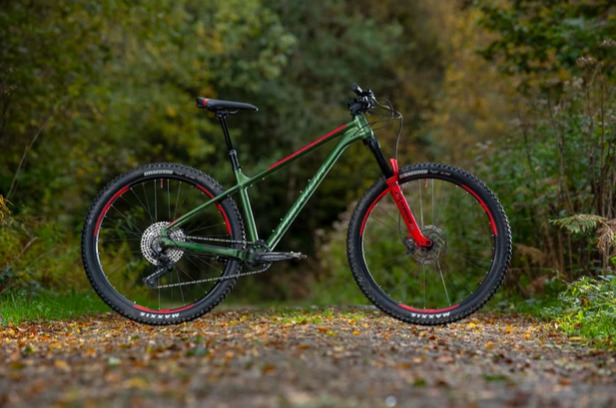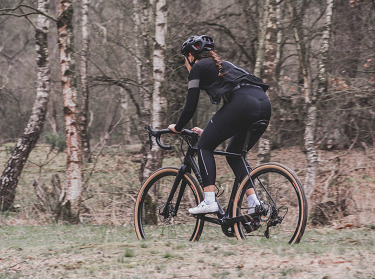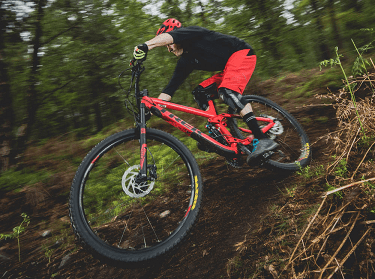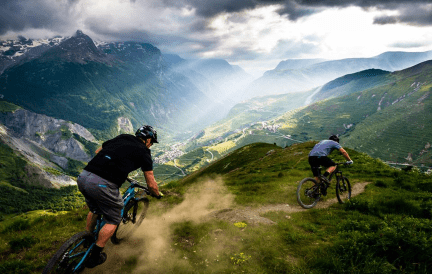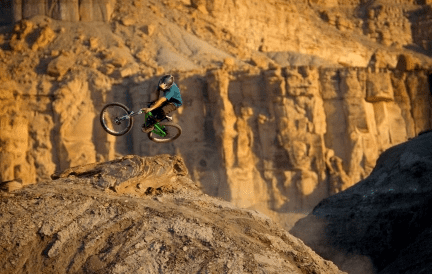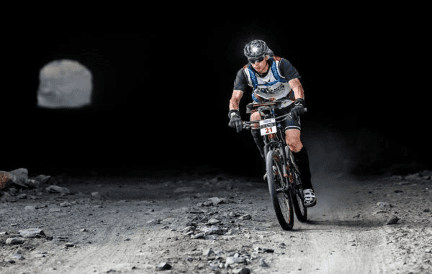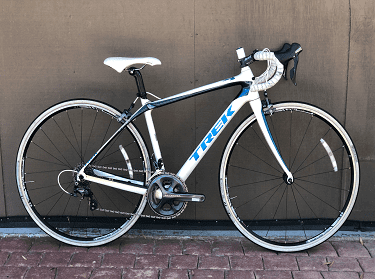Dual suspension mountain bike offer comfort, grip, speed, and confidence in challenging off-road terrain. Whether you’re looking for a long travel bike for local enduro trails.
- Part 1: Product Overview
- Part 2: Product Advantages
- Part 3: Product Classification and Introduction
- Part 4: Buying Guide
Part 1: Product Overview
A dual suspension mountain bike can be very versatile and used for almost any discipline of mountain biking. These bikes are great for riding on particularly bumpy cross-country trails.

Important Aspects
A mountain bike is perfect for off-road trails, hills, and rough terrain. However, like anything else, not all mountain bikes are designed for the same purpose. Some are more capable of different situations. They can also reduce some of the bumps that you may feel when performing technical functions on these trails. One aspect that makes a mountain bike ideal for off-road riding is its suspension travel.
It can be constructive in deciding if a dual suspension mountain bike is right for you.
Reasons for Owning A Mountain Bike with Dual Suspension
The rear suspension will make your ride much smoother by absorbing the bumps on the trail because you will feel less of those bumps. Even doing things like high jumps won’t annoy you as much when you land as it otherwise would if you didn’t have this feature.
Another benefit is shock absorption cushioning is that it allows your wheels to make better contact with the ground, which gives them better traction. This, in turn, will provide you with much better control when you need to make any turns on rough areas of the trail and give you a better grip and allow you to get through those areas faster.
Having a dual suspension, therefore, means that you can be faster on bumpier trails and traverse them with as little discomfort as possible. Bouncing over rough sections of cross-country trails can also take energy from almost any mountain biker. Going fast over these areas means you’ll use even less energy getting across those rough patches.
The rear wheel suspension will make you more comfortable if you prefer to sit while descending. This is because your legs won’t have to act as shock absorbers instead of the rear suspension, as is usually the case when riding a hardtail mountain bike down a steep slope.
Part 2: Product Advantages
Double suspension mountain bikes and front suspension are suitable for off-road and trail riding. The dual suspension absorbs impacts better than the front suspension.
Dual/Full Suspension
The dual suspension mountain bike is better only for front suspension for downhill or enduro riding. But for off-road or country riding, it is not required.
There are many reasons why dual suspension, also called full suspension, is better than front suspension. Front suspension, as the name suggests, has suspension only at the front.
Dual (or full) suspension refers to a bike that offers suspension on both the front and rear of the bike. The front of the bike includes a suspension fork, which is the part of the bike that supports the front wheel. The suspension in the fork protects the bicyclist from impact when the front wheel hits rough terrain or in case of sudden falls.
The suspension is designed to soften the impact in the rear triangle of the bike, which holds the rear wheel of the bike.
In the rear of the bike, the suspension type may vary, but it all serves to protect the back of the bike from impacts. The rear suspension is usually only found on dual suspension mtb and not on a mtb bike dual suspension.
Different rear suspension designs are available, and choosing the best one for you may depend on personal preference. Basically, they all achieve a similar goal, so it’s hard to go wrong as long as your bike is well made.
Part 3: Product Classification and Introduction
Dual suspension mtb bikes are much more expensive than front suspension bikes. You must know if you need to spend more to buy a dual suspension bike. Below is a summary of if you absolutely need a mountain bike.
If you need a dual suspension bike, you need it for downhill or enduro riding. If not, a hardtail (front suspension) is preferred. You can do downhill or enduro without a dual-suspension bike, but it’s much better. For high-performance downhill or enduro riding, it is a must.
Suspension Basics
Suspension is a mechanism in a bicycle that allows the bike to absorb the impact of various rough terrains, providing the rider with a smoother ride and the ability to ride easily over a variety of terrain.
Suspension on a bicycle provides a spring mechanism that, when compressed, bounces air back as the bike hits specific terrain. The spring will “bounce” the bike back into place when compressed and consists of air pressure or the actual coil of the spring. Typically, the more expensive the bike, the more advanced the spring and suspension system.
Benefits of Dual Suspension
Now that we’ve covered the basics and mechanics of mountain bike design let’s move on to why it might matter to your buying decision. This section will discuss the key benefits of choosing dual suspension mtb and how to determine if it’s the best fit for your riding style.
Mountain Bike Brakes
Hydraulic disc brakes are the accepted standard on the modern mountain bike. The hydraulic system inside the brake is responsible for powering the brake, so you can simply control the lever position with one finger to control the braking. The benefits of hydraulic disc brakes on a bike are stopping power and modulation. You simply don’t need to jerk very harshly with hydraulic disc brakes to give more stopping power.
Mountain Bike Suspensions
(1) Coil Suspension
Coil suspension uses a steel spring and oil inside to lubricate all the components. The main advantage of these suspension forks is their reliability and longevity, as you hardly need to service or worry about them. However, they have some disadvantages, such as extra weight (800 grams more than air forks) and lack of adjustability.
(2) Air Suspension
Air suspension type forks are much lighter and can be adjusted to suit the rider’s weight but require more upkeep and periodic checks to ensure everything is tight and working perfectly. An air fork is a massive upgrade for a basic mountain bike because the weight really makes a difference in how the bike behaves on the trail. Less weight on the bike’s front end makes it faster to change direction and easier to lift the wheel over obstacles. Also, less weight means less weight needed to climb mountain peaks.
Speed
Another advantage of mtb dual suspension bike is speed! While these bikes are not built to be as naturally aerodynamic as a road bike and are not necessarily the fastest on the straights, the speed component is essential when you consider how easily you overcome obstacles on a full suspension bike. When we talk about speed in mountain biking terms, it’s primarily about how fast you can cover the trail. With that in mind, it’s hard to do it faster than on a full suspension bike.
Maintenance
Next up is maintenance. While these are usually quality bikes, sometimes there are no maintenance issues for mountain biking. These maintenance issues are only amplified with full suspension, for the simple reason that there are more moving parts. There is additional suspension on the back of the bike, which creates more opportunities for suspension problems.
While it certainly depends on the quality of the bike you purchase and how well you take care of it, it is a simple fact that full suspension bikes can have rear suspension problems that would not be possible on other bikes.
Weight
Next up is weight. This consideration is a thing of the past, but it can still matter in some cases. Because of the extra suspension, some models of full suspension bikes are heavier than other mountain bikes. Quality bikes solve this problem with a lightweight aluminium frame and components, but the suspension can still add weight to the bike.
Part 4: Buying Guide
Hit the local trails with a friend and have fun on the downhills, double suspension mountain bike will keep you protected. It allows for higher impacts and steeper descents and won’t punish you every time you make a wrong call at high speed.
Comfort
Mtb bike dual suspension cushions the impact at the front of the bike and at the rear. Heavier than their rigid counterparts, dual suspension MTB bikes are much more comfortable on rough terrain filled with obstacles. Full-suspension MTB bikes don’t give their riders the best pedal performance, but they do offer riders with back injuries better support.
Many inexpensive full suspension MTB bikes on the market have barely functioning rear suspension. These are meant for bumpy city roads only and should not be confused with a fully loaded MTB bike with dual suspension mountain bikes meant for trail riding. They perform well in jumps and for descents, mainly on unpredictable trails.
Aside from being best suited for off-road riding, the suspension offers another unique advantage – comfort. Let’s face it, there’s nothing truly “comfortable” about flying across trails, tackling bumpy rock gardens, and hitting huge drops. Fun, yes, but not comfortable.
But if we’re talking about degrees of comfort, any bike that absorbs impact better will provide a more comfortable ride. Full suspension bikes absorb the hard impacts you experience countless times while mountain biking. The result is a smoother, easier, and more comfortable ride.
Dual suspension mountain bikes are also great if you plan to spend more time in the saddle. Mtb double suspension on extended rides means that rear wheel impacts will be absorbed by the rear shock absorber, and you can stay in the saddle most of the time, saving plenty of energy for the final miles.
Price
First, the most apparent disadvantage of full suspension is the price. These bikes are slightly more expensive than other mountain bikes and even most bikes in general. A quality full suspension bike can cost close to $10,000 and is much more costly.
What you will likely see with an Mtb double suspension is the price. Buying a full suspension mountain bike can cost significantly more than a hardtail mountain bike, so you’ll need to have the extra money to buy one.
The cost comes from the added complexity involved in manufacturing a full suspension and that these are high-end bikes. To justify the price, you have to do the intense off-road riding required of a double suspension mountain bike.
Dual suspension bikes don’t start being “good” until above $2000. Cheaper here will result in a less than optimal experience! For the best experience, I recommend your budget start at $2500. With this money, you’ll be buying quality suspension components critical to the bike performing as expected.
Frame Material
Frame material will be closely related to your budget to some extent. Like other bikes; if it’s carbon, that doesn’t mean it’s better. Be doubly wary of cheap carbon. A rule of thumb to follow is that if you buy on a tight budget.
Buy the best light-alloy bike you can afford. Carbon fibre bikes are often lighter, more expensive, and have superior components than alloys, but that doesn’t make them any more fun to ride.
Wheel Size
Cross country and trail bikes with up to about 150mm of travel will be available in 650b (27.5 inches) and 29-inch sizes. There were 3 sizes, but by the time you read this, that number will surely be 2! Both sizes have many advantages and disadvantages.


